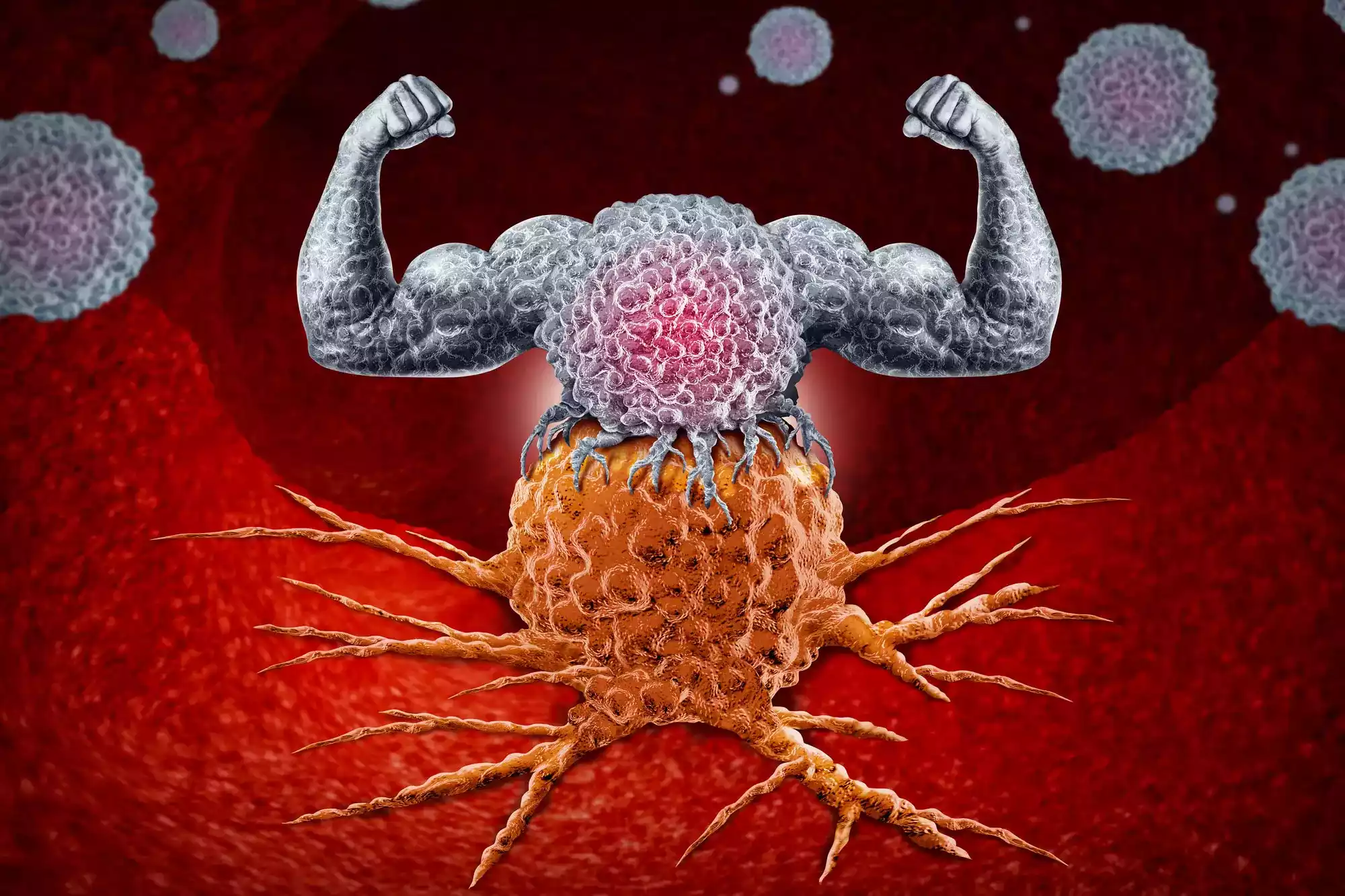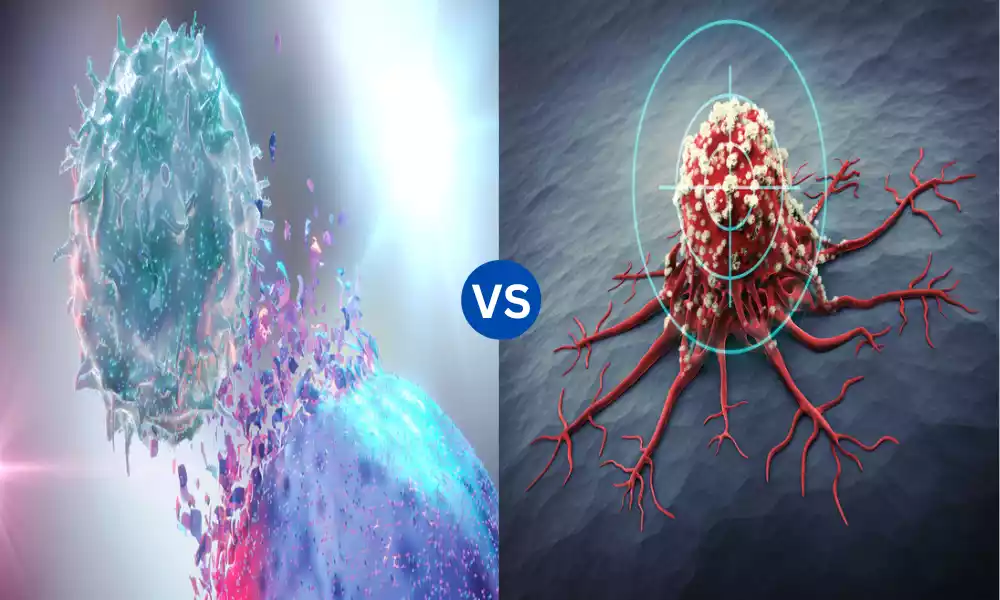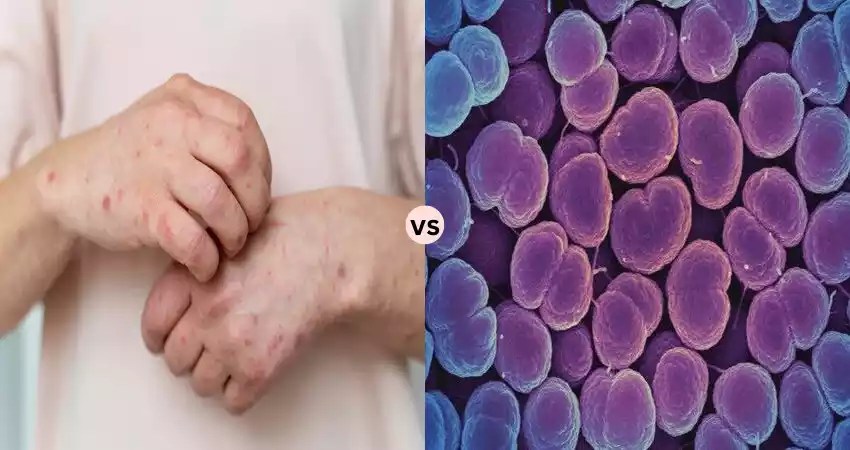Immunotherapy and Targeted Therapy are groundbreaking advancements in the realm of cancer treatment, marking a departure from conventional approaches. Immunotherapy empowers the body’s own immune system to recognize and combat cancer cells, transforming the body into an active participant in the healing process. On the other hand, targeted therapy meticulously identifies and acts upon specific molecular markers in tumors, ensuring a focused and tailored assault on cancerous cells while sparing healthy ones.
These innovative therapies, driven by deep scientific insights and research, promise a more personalized, effective, and gentler treatment pathway for cancer patients.
Definition of Immunotherapy
Immunotherapy is a type of medical treatment that harnesses and amplifies the body’s natural immune response to detect and fight diseases, especially cancer. By stimulating or restoring the immune system’s ability to attack diseased cells, immunotherapy offers an alternative or adjunct to other forms of treatment, such as chemotherapy, radiation, or surgery.

In cancer therapy, immunotherapy aims to enhance the immune system’s precision in targeting and eliminating tumor cells, often by interfering with their ability to evade immune detection or by amplifying immune cell activity against them.
The Science Behind Immunotherapy
Immunotherapy represents a groundbreaking approach in the fight against various diseases, particularly cancer. It capitalizes on the body’s natural defense mechanisms to target and combat these diseases. Here’s a deeper dive into the science behind immunotherapy:
1. The Immune System Basics:
- The immune system is a complex network of cells, tissues, and organs that work synergistically to identify and neutralize foreign invaders like bacteria, viruses, and malignant cells.
- Key players in this system include white blood cells, particularly lymphocytes (T cells and B cells), which identify and attack foreign or abnormal cells.
2. Cancer’s Evasion Tactics:
- Cancer cells often develop mechanisms to evade the immune system, allowing them to proliferate. For instance, they can express proteins that suppress immune cell functions or create a tumor microenvironment that’s inhibitory to immune cells.
3. Immunotherapy’s Approaches:
- Boosting Immune Responses: Certain forms of immunotherapy amplify the body’s innate ability to fight cancer. Examples include the use of cytokines, proteins that can enhance the immune system’s response to tumors.
- Overcoming Immune Suppression: Cancer cells can produce signals that suppress the immune response, making it harder for the immune system to target them. Some immunotherapies, like checkpoint inhibitors, block these signals, essentially “releasing the brakes” on the immune response. Common targets include the PD-1/PD-L1 and CTLA-4 pathways.
- Adoptive Cell Transfer: Here, immune cells are taken from a patient, modified and multiplied in a lab, and then reintroduced into the patient to attack cancer cells. CAR-T therapy, where T cells are engineered to express specific receptors that target cancer cells, is a notable example.
- Cancer Vaccines: Similar to how vaccines work against infectious diseases, cancer vaccines expose the immune system to components of cancer cells, priming it to recognize and attack them.
- Monoclonal Antibodies: Lab-made molecules that can be designed to mimic immune system proteins. They can be engineered to target specific parts of cancer cells, marking them for destruction by the immune system.
4. Immune Memory and Durability:
- One significant advantage of immunotherapy is the potential for immune memory. Just as the immune system remembers pathogens it has encountered before (like the chickenpox virus), it can remember the characteristics of tumor cells. This means that if the cancer returns, the immune system might recognize and attack it faster.
5. Challenges and Limitations:
- The immune system’s vast complexity means responses to immunotherapy can vary widely among individuals.
- There can be overstimulation, leading the immune system to attack healthy cells, causing autoimmune side effects.
- Some tumors find ways to remain “hidden” from immunotherapies or develop resistance.
6. Future Directions:
- Combination therapies, which use multiple treatments simultaneously (e.g., combining immunotherapy with targeted therapy or chemotherapy), are under investigation to enhance treatment outcomes.
- Ongoing research aims to identify new targets, improve treatment specificity, and reduce side effects.
The science behind immunotherapy revolves around leveraging the body’s natural defenses, making it a promising and continuously evolving frontier in modern medicine.
Types of Immunotherapy
Immunotherapy encompasses a variety of treatments that harness and enhance the innate powers of the immune system to combat diseases, especially cancer. Here are the primary types of immunotherapy:
- Checkpoint Inhibitors:
- These drugs block proteins that prevent immune cells from attacking cancer cells.
- Common targets include PD-1, PD-L1, and CTLA-4.
- Examples: Pembrolizumab (Keytruda), Nivolumab (Opdivo), and Ipilimumab (Yervoy).
- T-cell Transfer Therapy:
- A patient’s T cells (a type of immune cell) are extracted, genetically modified, and then reintroduced into the patient to better attack cancer cells.
- CAR-T (chimeric antigen receptor T-cell) therapy is a prominent example, where T cells are modified to target specific proteins on cancer cells.
- Monoclonal Antibodies:
- Lab-made molecules designed to target specific parts of cancer cells.
- Can either attach to cancer cells, marking them for the immune system to attack, or deliver toxic substances directly to the cancer cells.
- Examples: Trastuzumab (Herceptin) and Rituximab (Rituxan).
- Cancer Vaccines:
- Vaccines that either prevent cancers caused by viruses (like HPV vaccines) or treat existing cancers by training the immune system to recognize and attack cancer cells.
- Example of a treatment vaccine: Sipuleucel-T (Provenge) for prostate cancer.
- Immune System Modulators:
- Drugs or substances that boost or modify the overall immune response.
- Examples include interferons and interleukins. Interferon-alpha, for instance, boosts the immune system and slows tumor growth.
- Oncolytic Virus Therapy:
- Uses viruses that are modified to infect and kill cancer cells. While the virus kills cancer cells, it also releases antigens that trigger an immune response against the tumor.
- Example: Talimogene laherparepvec (Imlygic) for melanoma.
- Bispecific Antibodies:
- Lab-made antibodies that can attach to both a cancer cell and an immune cell, facilitating the immune cell to attack the cancer cell.
- Example: Blinatumomab (Blincyto) for certain types of leukemia.
- Adjuvant Immunotherapies:
- Substances that boost the body’s immune response to vaccines or other immunotherapies.
- Examples include certain microbial components and synthetic DNA sequences.
- Cytokines:
- Proteins that play key roles in cell signaling and regulation of immune responses.
- Types include interferons (IFNs) and interleukins (ILs). They can stimulate immune cells to attack cancer cells.
- Adoptive T cell Therapies:
- T cells are extracted from a patient’s tumor, selected for their activity against cancer cells, expanded in the lab, and infused back into the patient.
- Unlike CAR-T, these cells are not genetically modified.
Given the rapid advancements in this field, new types and subtypes of immunotherapy are continually being researched and developed, making it an ever-evolving domain in oncology and other areas of medicine.
Definition of Targeted Therapy
Targeted therapy is a type of cancer treatment that uses drugs or other substances to identify and attack specific molecules (targets) that are involved in the growth, progression, and spread of cancer cells, without causing damage to normal cells. These therapies are designed based on the specific genetic or molecular changes that differentiate cancer cells from normal cells.

By focusing on these unique vulnerabilities, targeted therapies can block the growth and spread of cancer cells while limiting harm to normal cells, potentially leading to fewer side effects compared to other traditional forms of cancer treatments like chemotherapy.
How Targeted Therapy Works
Targeted therapy represents a more precise approach to treating diseases, especially cancer, by honing in on specific molecular targets that are involved in the growth, progression, and spread of cancer cells. Here’s how targeted therapy works:
1. Identification of Targets:
- Every cell contains numerous proteins and other molecules that control its growth, division, and overall function. Some of these molecules become altered in cancer cells, driving their uncontrolled growth and spread.
- Advances in molecular biology and genomics have allowed researchers to identify these specific altered molecules in cancer cells, making them potential therapeutic targets.
2. Development of Targeted Agents:
- Once a potential target is identified, drugs or other therapeutic agents are developed or chosen to interact with that target specifically. By interacting with the target, these agents can disrupt the growth and survival of cancer cells.
3. Types of Targeted Therapies:
- Small Molecule Inhibitors: These are low-molecular-weight drugs that can penetrate the cell membrane and interfere with the activity of specific molecules inside the cell. For example, they might block the action of enzymes involved in cell growth and division.
- Monoclonal Antibodies: These are proteins made in the lab that can attach to specific targets on the cell surface. They can function by:
- Blocking a specific protein, thereby inhibiting its function.
- Delivering toxic substances to the cancer cell.
- Marking the cancer cell for destruction by the immune system.
4. Mechanisms of Action:
- Signal Transduction Inhibitors: Block activities of molecules that transmit signals inside cells, which are essential for cell growth and survival.
- Gene Expression Modulators: Modify the function of proteins that play a role in controlling gene expression.
- Apoptosis Inducers: Drive cancer cells to undergo apoptosis (programmed cell death).
- Angiogenesis Inhibitors: Block angiogenesis, the process by which tumors develop new blood vessels to support their growth.
- Hormone Therapies: Block the body’s ability to produce certain hormones or interfere with how hormones interact with their receptors.
5. Precision and Personalization:
- Often, targeted therapies are most effective in patients whose tumors have specific genetic mutations or other molecular markers that the therapy is designed to target.
- Diagnostic tests, often referred to as companion diagnostics, are used to identify patients who are most likely to benefit from a specific targeted treatment.
6. Limitations and Challenges:
- Resistance: Just as with other forms of cancer treatment, tumors can develop resistance to targeted therapies. This resistance can be intrinsic (from the start) or acquired (develops over time).
- Side Effects: Even though targeted therapies are designed to affect only cancer cells, they can also affect healthy cells and cause side effects, though often these are different from traditional chemotherapy side effects.
Targeted therapy works by interfering with specific molecules or pathways that are crucial for the growth and survival of cancer cells. By understanding the unique molecular and genetic profile of each patient’s tumor, clinicians can potentially select the most effective treatment, thereby personalizing cancer therapy.
Main Types of Targeted Therapy
Targeted therapy focuses on specific molecules and pathways to treat diseases, particularly cancer. By targeting these specific changes, these therapies can halt the growth and spread of cancer cells while sparing normal cells. Here are the main types of targeted therapy:
- Small Molecule Inhibitors:
- These are typically oral drugs that can penetrate cell membranes to reach intracellular targets. They interact with proteins inside the cell, often by inhibiting enzymatic activity critical for cancer growth and survival.
- Examples: Imatinib (Gleevec) for chronic myeloid leukemia, Gefitinib (Iressa) for non-small cell lung cancer.
- Monoclonal Antibodies (mAbs):
- These are proteins made in the lab designed to target specific antigens on the cell surface. They work outside the cell, targeting cell surface receptors or proteins.
- Examples: Trastuzumab (Herceptin) targets the HER2 receptor in breast cancer; Bevacizumab (Avastin) targets the vascular endothelial growth factor (VEGF) and hinders angiogenesis.
- Tyrosine Kinase Inhibitors (TKIs):
- Tyrosine kinases are enzymes that can activate many cellular processes, including cell growth and division. Some cancer cells have abnormally active tyrosine kinases, and TKIs block this activity.
- Examples: Erlotinib (Tarceva) and Crizotinib (Xalkori).
- Angiogenesis Inhibitors:
- Angiogenesis is the process by which tumors form new blood vessels to fuel their growth. These inhibitors block the growth of these new blood vessels.
- Example: Sorafenib (Nexavar).
- mTOR Inhibitors:
- mTOR is a protein inside cells that regulates cell growth and survival. Some cancers are linked to a hyperactive mTOR pathway, and these inhibitors block its activity.
- Example: Everolimus (Afinitor).
- Proteasome Inhibitors:
- Proteasomes are complexes in cells that break down proteins. Inhibiting the proteasome can lead to an accumulation of proteins in cancer cells, causing them to die.
- Example: Bortezomib (Velcade).
- Hormone Therapies:
- These interfere with the body’s ability to produce or interact with hormones, which some cancers require for growth.
- Examples: Tamoxifen for breast cancer, Enzalutamide (Xtandi) for prostate cancer.
- PARP Inhibitors:
- PARP (Poly ADP ribose polymerase) is an enzyme involved in DNA repair. Inhibiting PARP leads to increased DNA damage in cancer cells, causing their death, especially in cells with other DNA repair deficiencies (like BRCA mutations).
- Example: Olaparib (Lynparza).
- Checkpoint Inhibitors:
- While they are often classified under immunotherapies, checkpoint inhibitors also have a targeted nature as they specifically block proteins that prevent immune cells from attacking cancer cells.
- Examples: Pembrolizumab (Keytruda) targeting PD-1, Atezolizumab (Tecentriq) targeting PD-L1.
- Histone Deacetylase (HDAC) Inhibitors:
- These influence the way genes in cells are expressed by affecting the proteins associated with DNA.
- Example: Vorinostat (Zolinza).
The development of targeted therapies is a dynamic field. As our understanding of cancer biology grows, new targets and corresponding drugs continue to emerge. Many targeted therapies are used in combination with each other or with other treatments to enhance efficacy and overcome resistance.
Comparison Table of Immunotherapy and Targeted Therapy
Here’s a comparison table outlining the key differences between Immunotherapy and Targeted Therapy:
| Feature/Aspect | Immunotherapy | Targeted Therapy |
|---|---|---|
| Basic Definition | Utilizes the body’s immune system to fight diseases, especially cancer. | Uses drugs to target specific molecules involved in cancer growth and progression. |
| Mechanism of Action | Boosts or restores the immune system’s ability to detect and combat tumors. | Interferes with specific molecular targets associated with cancer. |
| Key Components | T cells, checkpoint inhibitors, cancer vaccines, etc. | Small molecules, monoclonal antibodies, specific inhibitors. |
| Goal | Enhance the body’s natural defenses to recognize and eliminate cancer cells. | Directly block or interrupt the activities of cancer cells at the molecular level. |
| Side Effects | Potential for autoimmune reactions, inflammation, etc. | Often more specific, based on the molecule or pathway being targeted. |
| Response Duration | Can lead to long-lasting responses in some patients. | Efficacy may decrease if cancer cells develop resistance to the targeted molecule. |
| Treatment Personalization | Based on immune response and, in some cases, tumor characteristics. | Often requires identification of specific genetic mutations in the tumor. |
| Main Benefits | Potentially durable responses; broad applicability across different cancers. | Precision; decreased damage to healthy cells; potential efficacy when other treatments fail. |
| Limitations | Not all patients respond; potential severe immune reactions. | Resistance can develop; specific to certain molecular or genetic profiles. |
This table provides a broad comparison, and the intricacies of each therapy can be explored further based on specific treatments, diseases, and patient profiles.
Advantages and Limitations of Immunotherapy and Targeted Therapy
Both immunotherapy and targeted therapy have revolutionized cancer treatment, offering more specific and often less toxic alternatives to traditional chemotherapy. Here’s a breakdown of their advantages and limitations:
Immunotherapy
Advantages:
- Specificity: Targets cancer cells based on unique characteristics without broadly affecting rapidly dividing cells, unlike traditional chemotherapy.
- Immune Memory: After successful treatment, the immune system might “remember” cancer cells, offering long-term protection against recurrence.
- Synergistic Combinations: Immunotherapies can be combined with other treatments to enhance their effects.
- Treatment of Hard-to-Target Cancers: Some immunotherapies can treat cancers that are resistant to other treatment modalities.
Limitations:
- Limited Response Rate: Not all patients respond to immunotherapies, and the effectiveness can vary significantly among individuals.
- Autoimmune Reactions: By boosting the immune system, there’s a risk it might attack healthy cells, leading to autoimmune-like side effects.
- High Costs: Many immunotherapies are expensive, limiting access for some patients.
- Resistance: Over time, some cancers can develop resistance to immunotherapy.
Targeted Therapy
Advantages:
- Precision: Designed to target specific molecules or pathways, reducing harm to normal cells.
- Tumor Profiling: With advances in genomics, tumors can be profiled to identify mutations and guide targeted therapy choice, personalizing treatment.
- Reduced Side Effects: Often has a different (and sometimes milder) side effect profile compared to traditional chemotherapy.
- Effective for Rare Mutations: Can be effective in treating cancers with specific rare mutations.
Limitations:
- Resistance: Tumors can mutate and become resistant to the targeted therapy.
- Narrow Scope: Only patients with specific mutations or molecular markers can benefit from certain targeted therapies.
- Side Effects: While often milder than chemotherapy, targeted therapies can still have side effects, sometimes severe.
- High Costs: Similar to immunotherapies, targeted therapies can be expensive.
While both immunotherapy and targeted therapy offer significant advantages over traditional treatments, they come with their own sets of challenges. Continuous research aims to improve their efficacy, expand their applicability, and mitigate their limitations.
Real-World Success Stories
Both immunotherapy and targeted therapy have provided transformative results for many patients, offering hope where traditional treatments may have failed. Here are some real-world success stories illustrating the power of these therapies:
Immunotherapy
- Melanoma: Historically, advanced melanoma had a grim prognosis, with few treatment options. The introduction of checkpoint inhibitors, such as ipilimumab (Yervoy) and pembrolizumab (Keytruda), has transformed the landscape. Numerous patients have experienced significant tumor shrinkage, with some even achieving complete remission. These drugs have significantly improved overall survival rates for advanced melanoma patients.
- Lung Cancer: Pembrolizumab (Keytruda) has shown efficacy in treating patients with non-small cell lung cancer (NSCLC) with specific genetic markers. Some patients who had exhausted other treatment options saw dramatic tumor shrinkage and prolonged survival.
- Childhood Leukemia: CAR-T cell therapy, a type of immunotherapy, has shown remarkable results in children and young adults with acute lymphoblastic leukemia (ALL). Some patients who had relapsed multiple times achieved complete remission after receiving this treatment.
Targeted Therapy
- Chronic Myeloid Leukemia (CML): The drug imatinib (Gleevec) targets the BCR-ABL fusion protein, which drives CML. Before imatinib, CML was often fatal within a few years. With its introduction, many patients have lived for years with their disease under control, transforming CML into a manageable condition for many.
- Breast Cancer: Trastuzumab (Herceptin) targets the HER2 protein, overexpressed in about 20% of breast cancers. Before the introduction of trastuzumab, HER2-positive breast cancer was associated with a poor prognosis. The drug has significantly improved survival rates for these patients.
- Lung Cancer: Patients with NSCLC and a mutation in the EGFR gene have benefited from targeted drugs like erlotinib (Tarceva) and afatinib (Gilotrif). Similarly, patients with ALK-positive NSCLC have seen dramatic responses to drugs like crizotinib (Xalkori).
- Gastrointestinal Stromal Tumors (GISTs): This rare cancer was once almost uniformly fatal. Introduction of imatinib (Gleevec), which targets the KIT protein, transformed the treatment landscape. Many patients with GIST have lived for years with the disease controlled using this drug.
These success stories represent just a fraction of the transformative power of immunotherapy and targeted therapy. It’s essential to that individual responses can vary, and not all patients will have the same outcomes. Continued research is critical to broaden the applicability of these therapies and achieve even more success stories.
Future of Cancer Treatment
The future of cancer treatment looks promising, driven by rapid advances in technology, a deeper understanding of tumor biology, and the development of innovative therapeutic strategies.

Here’s a glimpse into the evolving landscape:
- Precision Medicine and Personalized Treatment:
- Genomic Profiling: As genomic sequencing becomes more affordable and accessible, it will be increasingly used to guide treatment decisions based on the specific mutations and alterations present in a patient’s tumor.
- Phenotypic Profiling: Beyond genomics, profiling a tumor’s proteomic, metabolomic, and other characteristics can provide deeper insights into its vulnerabilities.
- Advancements in Immunotherapy:
- Next-Generation CAR-T Therapies: While current CAR-T therapies target a limited set of antigens, research is ongoing to identify new targets and improve the safety and efficacy of this approach.
- Tumor Vaccines: Efforts are being made to develop vaccines that prime the immune system to recognize and attack tumor-specific antigens.
- Combination Therapies: Combining different immunotherapies or integrating immunotherapy with targeted therapies, radiation, or chemotherapy can enhance their effectiveness.
- AI and Big Data:
- Artificial intelligence (AI) and machine learning are being used to analyze vast datasets, from clinical trial results to genomic data, to identify patterns, predict patient responses, and design new therapeutic strategies.
- Drug Delivery Enhancements:
- Nanotechnology is being explored to deliver drugs directly to tumor cells, improving the efficacy and reducing side effects.
- Biodegradable implants and localized drug delivery systems can provide sustained release of drugs at the tumor site.
- Adaptive Therapies:
- Rather than aiming for complete eradication of cancer, adaptive therapy seeks to manage cancer as a chronic condition. This involves dynamically adjusting treatments based on how the tumor evolves and responds.
- Metronomic Chemotherapy:
- This approach involves administering chemotherapy at lower doses but with more frequent intervals, potentially reducing resistance and side effects.
- Therapies Targeting the Tumor Microenvironment:
- Recognizing that the environment surrounding a tumor plays a role in its growth and resistance to treatment, therapies are being developed to target factors like blood vessels, immune cells, and signaling molecules in the tumor microenvironment.
- Liquid Biopsies:
- Using a simple blood sample, liquid biopsies can detect fragments of tumor DNA, allowing for early cancer detection, monitoring treatment response, and early identification of recurrence.
- Radiomics and Advanced Imaging:
- Advanced imaging techniques can provide detailed information about tumor characteristics, facilitating more precise treatments.
- Radiomics involves extracting features from radiographic images using data-characterization algorithms, which can provide insights into the tumor’s phenotype.
- Global Collaboration:
- As cancer research and treatment become more complex, there’s an increasing emphasis on global collaboration. This includes sharing data, resources, and expertise to accelerate the pace of discovery and improve patient outcomes.
The future of cancer treatment is moving towards more individualized, effective, and less toxic approaches. Continued research, technological advancements, and multidisciplinary collaborations are paving the way for more innovative and hopeful strategies to manage and ultimately cure cancer.
Conclusion
Immunotherapy and Targeted Therapy represent revolutionary approaches in the fight against cancer. While traditional treatments often adopt a broad-spectrum approach, potentially harming healthy cells alongside malignant ones, immunotherapy harnesses the power of the patient’s immune system to specifically target cancer cells.
In parallel, targeted therapy zeroes in on the unique molecular characteristics of tumors, interrupting their growth and spread with remarkable precision. Both therapies offer the promise of increased efficacy, reduced side effects, and a higher quality of life for patients. As research advances, these modalities continue to reshape the landscape of cancer care, offering hope where previously there was limited recourse.































